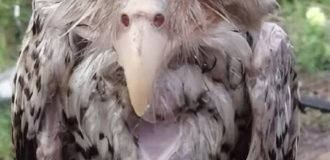In the dark waters of the Amazon there swims a monster, the mere sight of which gives you goosebumps. Piranhas are an easy snack for it. Its fangs are so huge that they do not fit in its mouth. And among fishermen, it is a real legend. Meet the vampire fish, the mackerel hydrolyke, or payara. 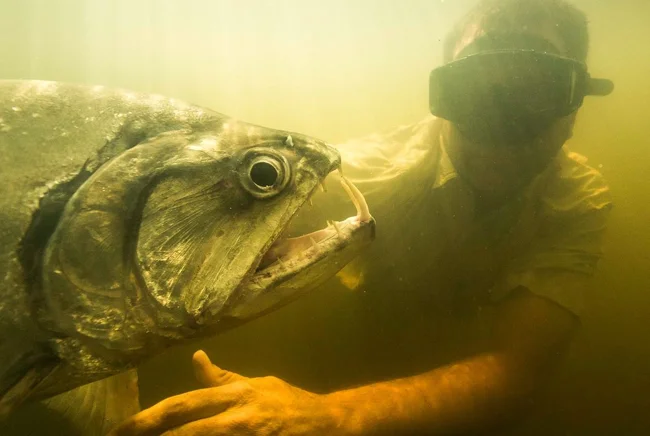
A meter-long fish with 15-centimeter teeth... Why not take a selfie with it right in the water?!
The vampire fish is 120 centimeters long, weighs 20 kilograms and has 15 centimeters of sabre-sharp fangs. This is an absolute record for the length of teeth relative to body size among all fish species! The fangs of the hydrolyke are so gigantic that it had to make holes in its skull! Special notches near the nose serve as a sheath for bladed weapons. 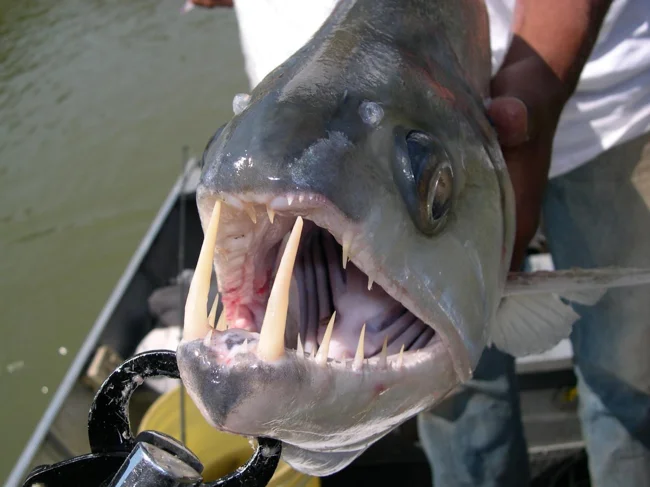
When you put toothpicks in your mouth and scare your mother, like you're a vampire.
The history of the hydrolyke is closely connected with the Amazon. Without the river, as it is now, there would be no toothy ones. Throughout its history, the river has turned into a huge lake, then into several turbulent channels, and even managed to change direction several times. The river became what we know it as today, turbulent, capricious, daring, and sometimes very cruel, only about 9 million years ago. All this time, while the Amazon was looking for its way, fish continued to swim along it. To swim, evolve, and temper their spirit with constant inconstancy. So, the hydrolycus not only survived while the river changed direction, but matured and became indestructible. It became a new kind of super predator. 
Hard times breed strong personalities. And fish.
Where other fish flounder helplessly in turbulent currents, the hydrolyc moves calmly and effortlessly. A powerful body and strong muscles allow it to easily cope with the restless river and search for prey. Whirlpools, rapids, narrow places with a turbulent current - this is its element. 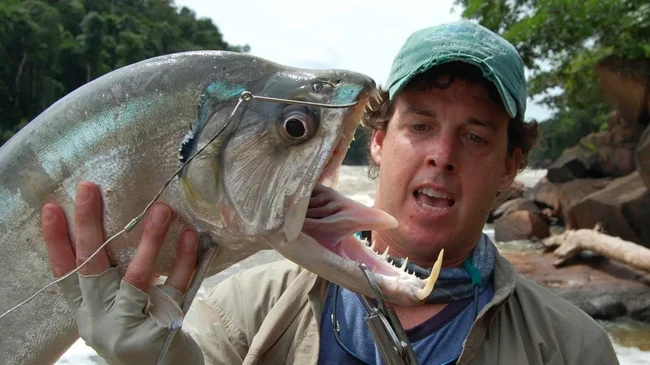
This is me reacting to a friend's story, which he has told me a thousand times already.
Any fish that is unlucky enough to be born smaller than a meter is almost certainly destined to become a meal for an Amazonian vampire. The hydrolycus takes even large fish without any problems - up to half its size. That is, about the size of a hand! One confident jerk, a bite - and the victim is already strung on stake-like teeth and helplessly flutters in the predator's mouth. Because of their long fangs, by the way, hydrolycuses were called bloodsuckers. But bodily fluids are of little interest to fish - they swallow their prey whole. By the way, the toothy monster is practically safe for humans. Hydrolykes do not attack people without reason - we are not their type. You can only get hurt by a payaru by accident, during fishing, and even then through carelessness. 
When you found a bottle opener on the bottom of the river.
Because of its almost legendary appearance, the fish is valued by both fishermen and aquarists. The former come to the banks of the Amazon specifically for the toothy trophy. The vampire fish is a valuable and respected trophy. Firstly, they live in places that are not very suitable for fishing - with powerful streams and currents. Secondly, it is not enough to catch a hydrolyke - you also need to pull it out! And the fish will resist as if you were dragging an unbridled horse on the other end, not a fish! 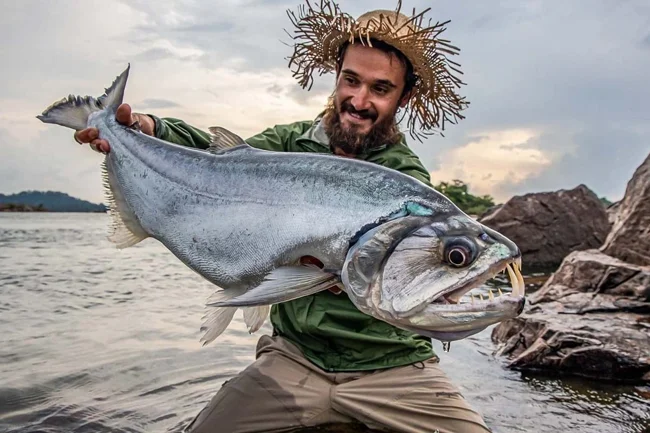
A loving look of a man that every woman wants to see.
Aquarium keepers prefer to admire live specimens, but there are some nuances here too. All modern fish on sale were caught in the wild. The idea of keeping hydrolycians in glass jars was invented more than 20 years ago, but during this time no one has ever been able to push the fish to spawn. This is because scientists do not yet even know how these vampires reproduce in the natural environment. Their related species spawn all year round with a peak during the rainy season, but what exactly the payaras do and when is still a mystery. And if you don’t know this, you can’t artificially arrange a “mating season”. 
— You have three wishes. — I want to know the secret of your reproduction! — No, that’s too much.
Scientists have not yet been able to hold a candle during intimate processes. But this does not prevent hydrolycs from actively breeding and reproducing. Despite periodic catch for sale and sport fishing, this species is not considered endangered. They are most threatened by the environmental situation and the construction of dams, because the fish depend on turbulent streams and currents.
Add your comment
You might be interested in:


